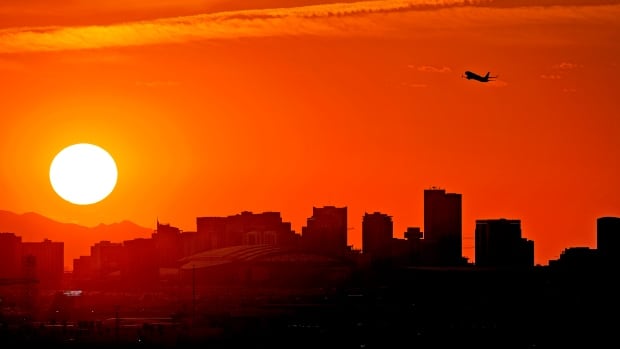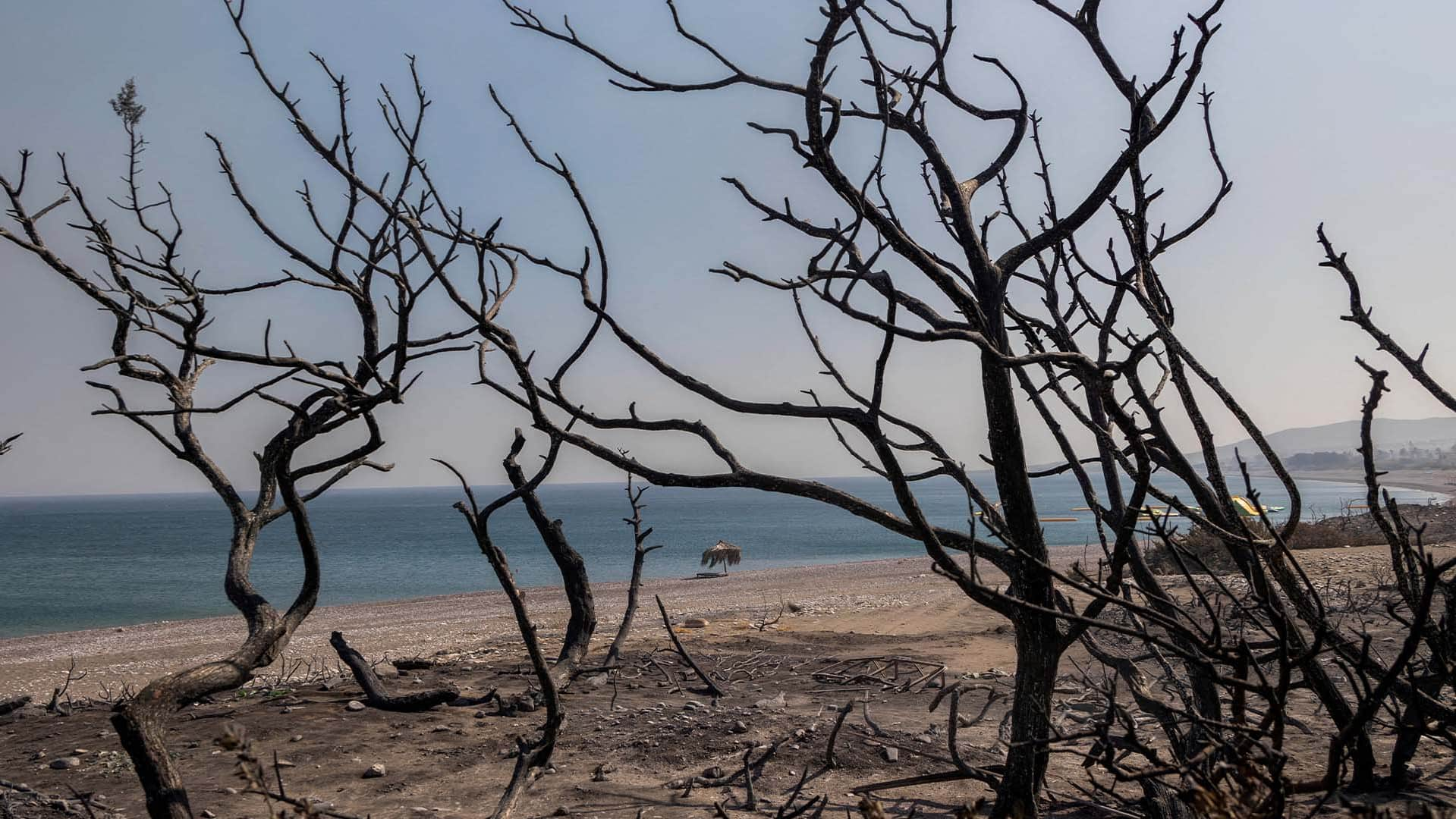
A record string of daily highs of more than 43.3 C in Phoenix ended Monday as the dangerous heat wave that suffocated the Southwest throughout July receded slightly with cooling monsoon rains.
The historic heat began blasting the region in June, stretching from Texas across New Mexico and Arizona and into California’s desert. Phoenix and its suburbs sweltered more and longer than most, with several records including the 31 consecutive days of 43.3 C temperatures and higher. The previous record was 18 straight days, set in 1974.
The streak was finally broken Monday, when the high topped out at 42.2 C at 3:10 p.m.
“The high temperature for Phoenix today is 108 F,” Jessica Leffel, a meteorologist with the National Weather Service, said at 5 p.m. “I’m just getting ready to post it on our social media.”
Phoenix also sweated through a record 16 consecutive days when overnight lows didn’t dip below 32.2 C, making it hard for people to cool off after the sun went down.
U.S. President Joe Biden on Thursday announced new measures aimed at helping communities deal with extreme weather, including heat safety rules to protect workers in high-risk industries, investment in improving weather forecasts and water storage in drought-affected areas.
August may be even hotter
The reprieve was expected to be brief, with the forecast calling for highs again above 43.3 C for several days later in the week.
And National Weather Service meteorologist Matthew Hirsch said August could be even hotter than July.

In California this July, Death Valley, long considered the hottest place on Earth, flirted with some of the hottest temperatures ever recorded, reaching 52.5 C on July 16 at the aptly named Furnace Creek.
The planet’s hottest recorded temperature ever was 56.67 C in July 1913 at Furnace Creek, according to the World Meteorological Organization, the body recognized as keeper of world records.
And in Nevada, also on July 16, Las Vegas briefly reached 46.6 C to tie the record for that date set in 1998.
The heat in Phoenix began to ease slightly last week with the city’s first major storm since the monsoon season began on June 15.
Climate change experts are warning that extreme weather and climate-related disasters could increase as punishing heat waves continue across much of the northern hemisphere.
Deadly weather events across U.S.
The Southwest heat wave was just one kind of extreme weather event that hit the U.S. in July.
Fatal flash floods swept people and cars away in Pennsylvania, and days of flooding led to dangerous mudslides in the Northeast.
At several points during the month, as many as a third of Americans were under some type of heat advisory, watch or warning.
While not as visually dramatic as other natural disasters, experts say heat waves are deadlier — heat in parts of the South and Midwest killed more than a dozen people in June.
Maricopa County, Arizona’s most populous area that is home to Phoenix, reported 25 heat-related deaths this year as of July 21.
Another 249 deaths are listed as under investigation, and results from toxicological tests that can take weeks or months after an autopsy could lead to many being confirmed as heat-related.
Maricopa County reported 425 heat-associated deaths in 2022, with more than half of those in July.

